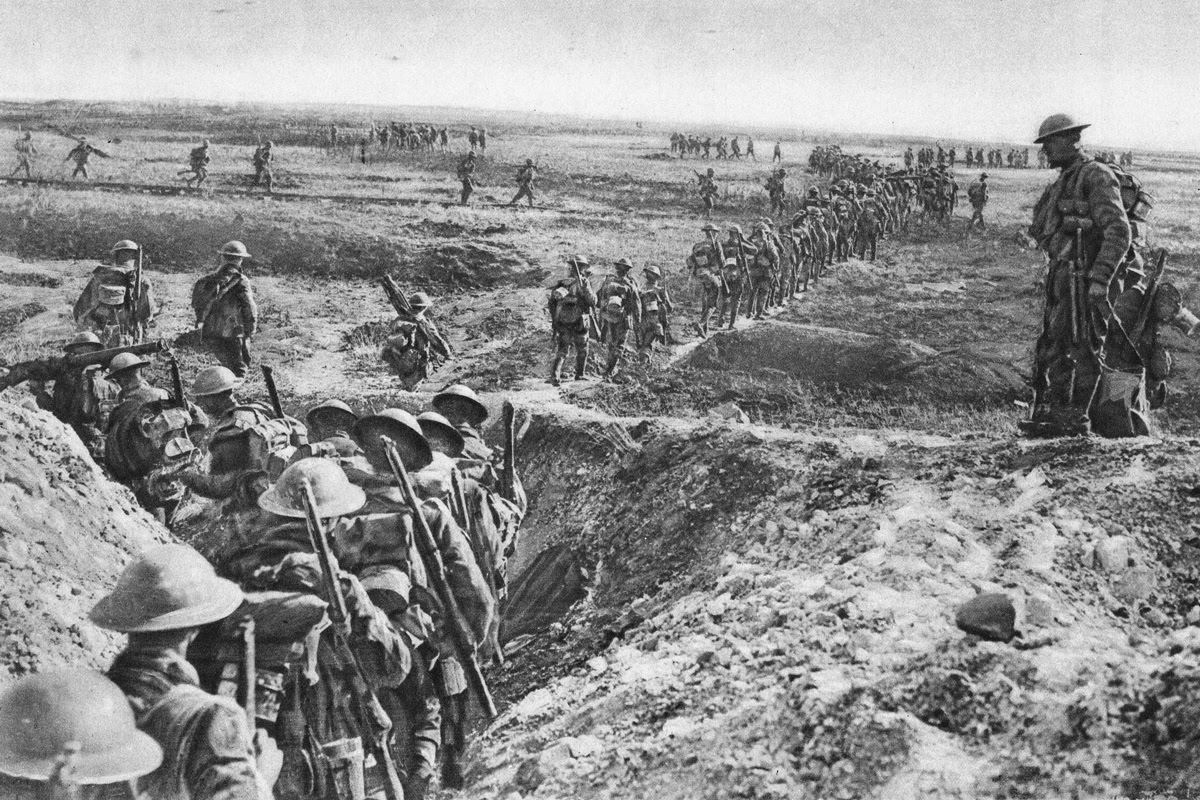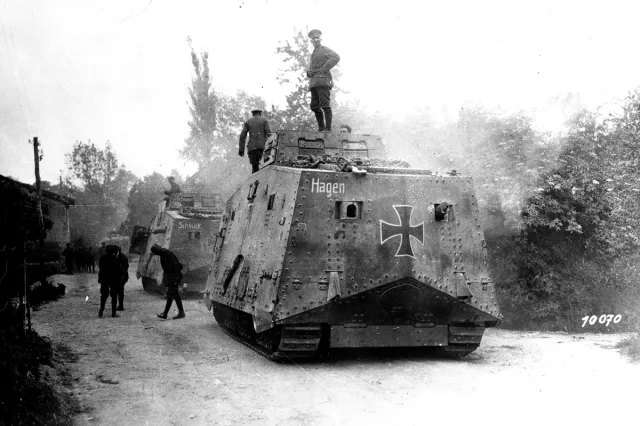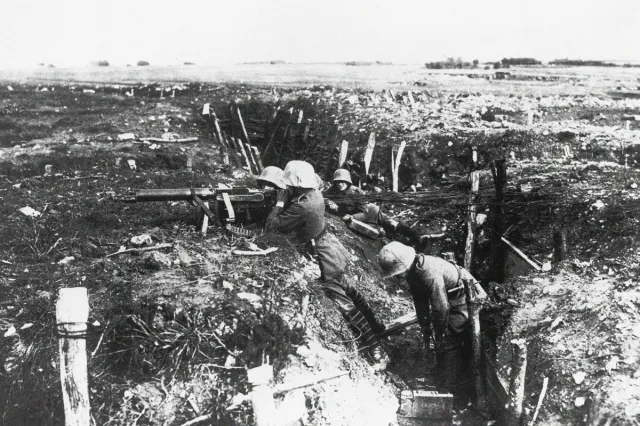How the Hundred Days Offensive Ended World War I
Published: 9 March 2025
via the History Facts website

1918 battlefield
For many people, the enduring image of World War I is that of infantry troops bunkered down in a trench somewhere along the hazy battlefield of the war’s Western Front. Yet it was the transition to a mobile phase of the war in 1918 that brought about its fairly sudden conclusion.
For many people, the enduring image of World War I is that of infantry troops bunkered down in a trench somewhere along the hazy battlefield of the war’s Western Front. Indeed, while stagnant trench warfare was the norm for a large chunk of the conflict in Europe, it was the transition to a mobile phase of the war in 1918 that brought about its fairly sudden conclusion, with the success of a rapidly moving offensive across late summer and early autumn that year. Here’s a look at how the Hundred Days Offensive ensured victory for the Allied forces.
The German Spring Offensive Failed To End the War
Following Russia’s exit from the war in late 1917, German General Erich Ludendorff funneled troops to the Western Front for what became known as the Spring Offensives. Beginning with Operation Michael on March 21, 1918, the German army launched four major attacks by mid-June that brought it within 55 miles of Paris but failed to deliver a knockout blow.
The Germans struck again near the French city of Reims on July 15, commencing the Second Battle of the Marne. However, they were unable to split the French army as intended, and instead were driven back when the Allies launched a counterattack three days later.
At a conference of Allied leaders on July 24, Supreme Allied Commander Ferdinand Foch outlined plans for a rapid-fire series of strikes against the exhausted and stretched-out German army. These attacks formed what later became known as the Hundred Days Offensive.
The Tide Turned With the Battle of Amiens
The Allied surge began with a surprise attack at Amiens on the morning of August 8, 1918. Following a barrage of gunfire at 4:20 a.m., the combined French, British, Canadian, and Australian forces overwhelmed the outnumbered German defenses along the river Somme. Upon losing some 26,000 of his troops on that day alone, Ludendorff referred to the disaster as “the black day of the German army.”
When their advance slowed by the third day of fighting, the Allies continued hitting the Germans along various points of the front. As part of what is sometimes called the Second Battle of the Somme, the combined British and Australian forces drove the Germans out of Albert, France, on August 22, and a New Zealand corps helped wrest control of the town of Bapaume a week later.
Having only recently entered the war, the U.S. First Army was given the task of eliminating the St. Mihiel salient (a protuberance of German territory along the line) in mid-September. It was an easy victory for the newcomers, as by that point the Germans had largely retreated to the Hindenburg Line, a nearly 100-mile-long series of heavily defended trenches, tunnels, and fortifications across northeastern France.
→ Read the entire article on the History Facts website here:
External Web Site Notice: This page contains information directly presented from an external source. The terms and conditions of this page may not be the same as those of this website. Click here to read the full disclaimer notice for external web sites. Thank you.





